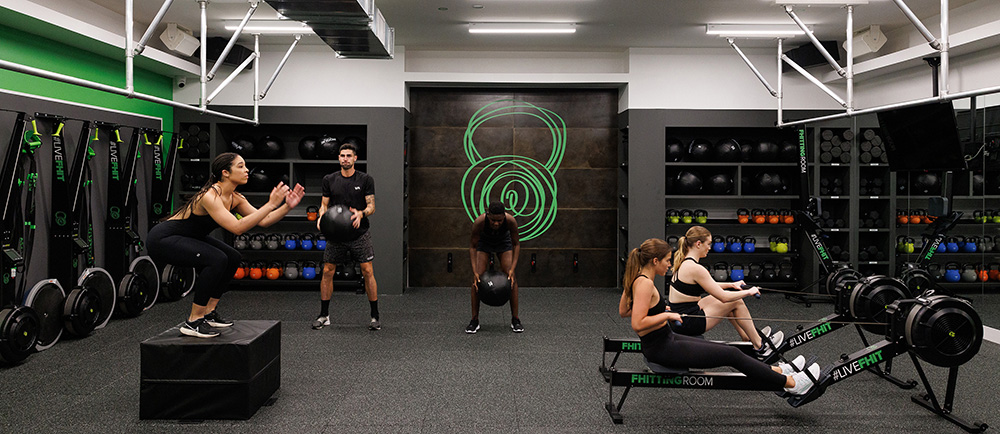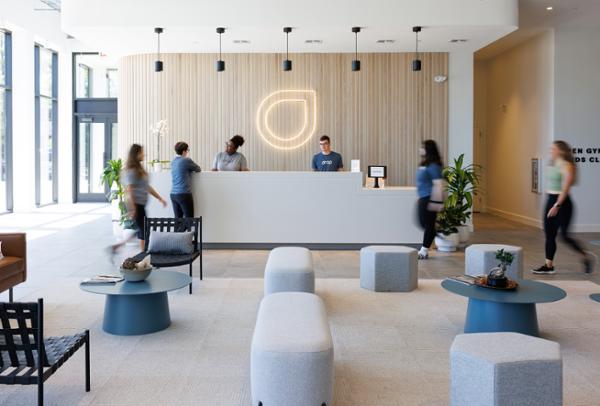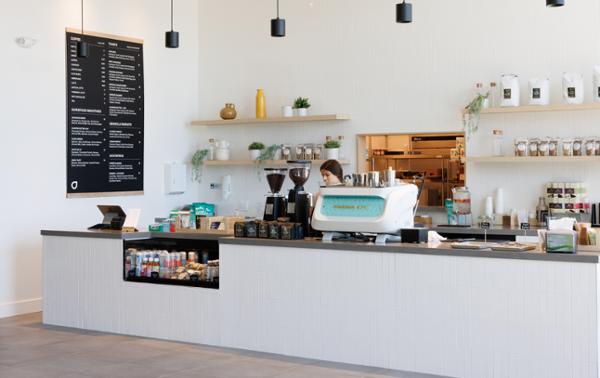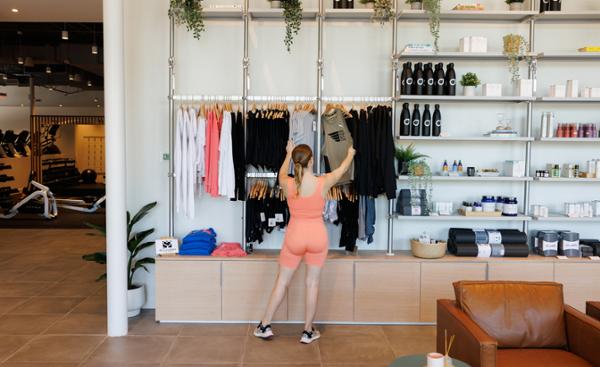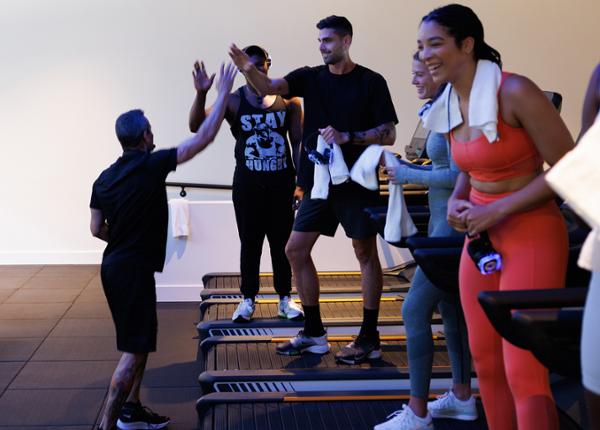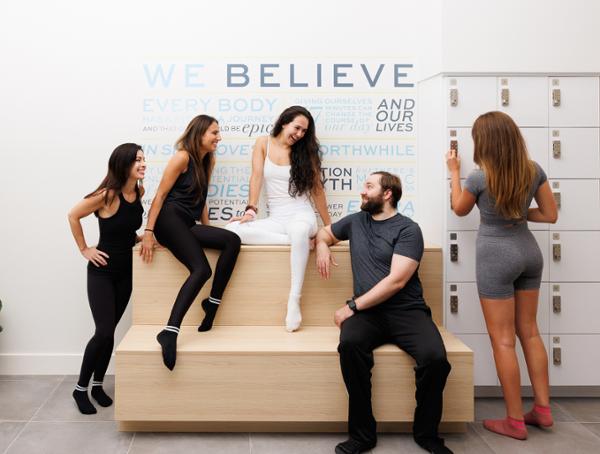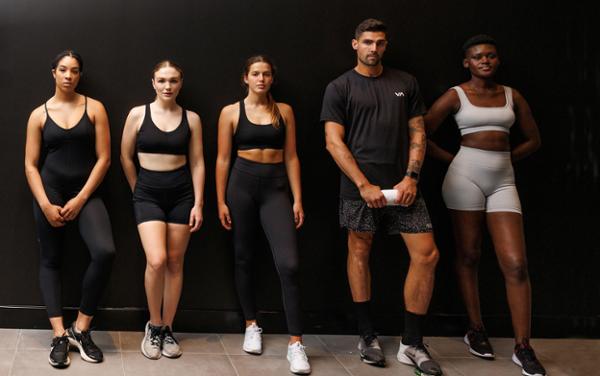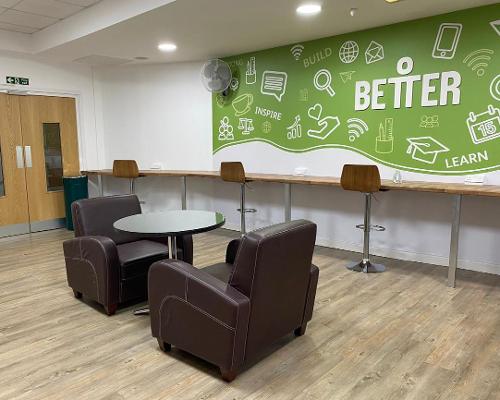features
Interview: Jeb Balise
Drop Fitness has launched its first site in New Jersey using a new model inspired by the gaming industry. The founder and CEO talks to Kate Cracknell
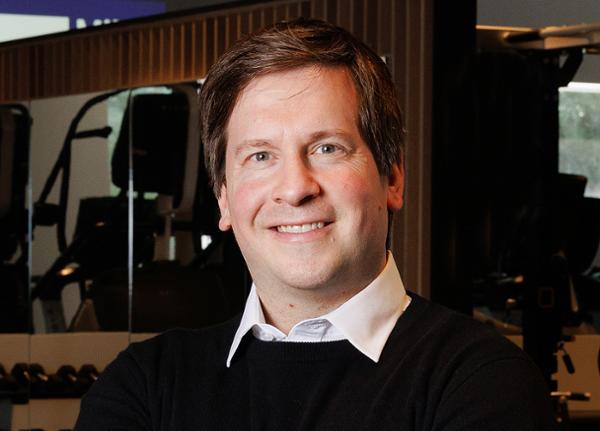
In May 2022, Drop Fitness opened its doors in the small town of Montvale, New Jersey, US. In the process, it unveiled a model that brings together four boutiques, private training and a gym floor – all on a ‘pay for what you want, when you want’ basis in a download-to-join membership that’s so flexible you need never leave the community.
Here, we ask Drop’s founder and CEO to elaborate on the concept and explain why he believes it could be a new winning formula.
How did you get the idea for Drop Fitness?
It might seem surprising, but my previous experience in mobile gaming provided the perfect trajectory into the fitness world.
I was a crossword puzzle enthusiast and I had the idea of putting crossword puzzle tournaments on Facebook, which at the time was blowing up with Farm Ville and City Ville. I thought our app would be a big hit, but it ended up appealing to only a small handful of people. I realised most people just wanted a small, easy, snackable, relatable puzzle they felt they could get through every day. The experience taught me a lot about my interests versus those of the mass market, and how those two things can be very different.
We started creating slightly smaller, easier puzzles. We also moved off Facebook and onto mobile phones. And all of a sudden it worked. In the space of a few years, with just seven of us in the office analysing user behaviours in the app, we ramped up to about US$2m in monthly revenues. In the process, we figured out a lot of things about the mass market. And with a segue into fitness, we learned a lot about what retention looks like, how to provide value on a daily basis to bring customers back, and how vitally important that is. Because it doesn’t matter if you have millions of downloads. If the next day you go out of fashion, you no longer have a business.
Can you elaborate on the link with fitness?
All our findings around retention got me thinking about the gym I used to attend. I was spending US$5,000–$10,000 a year on personal training. On top of that, I was being hit with a US$200 a month bill for membership. Charging a mandatory membership fee for the right to buy personal training seemed unnecessary, and not a great way to keep a high-value customer.
So I started digging into the industry and I discovered that around 35 per cent of people quit the gym every year, with the average gym membership lasting only 14 months. At the end of that 14 months, leaving can be such a terrible experience that some customers never want to come back – certainly not to you, in spite of the millions you’ve spent building your facilities.
Meanwhile, most successful gyms have an expensive sales team that’s continually refilling the ‘leaky bucket’ of members leaving after 14 months. There seemed to be an acceptance that customers would only be payers for 14 months. It was counter to everything I had learned about the importance of keeping customers and I started asking myself a lot of ‘what ifs?’.
My starting point was to ask what would happen if my club didn’t charge me the US$200 monthly membership. What if membership were something you gave for free, and then you let people pick and choose what they wanted to pay for over time? What would retention look like then?
That thought prompted me to start digging properly, and the first thing I did was buy data from random suburban clubs to test my hypothesis. What would happen if I didn’t charge a monthly fee? What would revenue look like if it only stemmed from ancillary products and services, sold either standalone or as a subscription? What would purchasing behaviour look like then? I spent about a year interrogating the data and looking at a range of different models and price points.
Tell us more about your analysis
We started by extracting cardio and weights, viewing it as a commodity that we wouldn’t force customers to purchase. If people wanted personal training or classes, or just wanted to come in and have something from the café, why force them to pay for cardio and weights?
In our modelling, we then set the price for cardio and weights equal to zero, just to see what happened to the usage curve. Of course, in practice you’d quickly become overcrowded and no-one would want to come. But this was an academic exercise at this point and was all about usage. That’s what we wanted to establish, because it then becomes a solvable equation and dictates your price point: if you know how often your members come, and how many machines you have, you can calculate how many passes you can sell before there’s a capacity constraint. That allows you to set your pricing at a level where you sell to comfortable capacity without overselling and crushing the user experience.
In practice, what that means for Drop Fitness is a price tag of US$1,000 for our annual Drop Pass – unlimited use of our open gym product – although we’re currently offering a new member discount and selling it at US$500. I expect the price will change as we fill up: our primary focus is usage and capacity, because the business model works at most prices.
We’ll charge a reasonable price that gets us to comfortable capacity, and then start a wait list. We’re not going to jeopardise the customer experience by overselling.
You offer more than a gym floor, too...
Factoring out the open gym as a standalone business was the biggest hump to get over. Then we just started adding in all the other things that are selling around the world, starting with four premium boutique fitness brand partners – Fhitting Room, Physique 57, Mile High Run Club and Humming Puppy – with proven track records from proven entrepreneurs.
And that’s the magic of the whole story: layering on the brands we know people will pay for.
We sell five different products: 7,000sq ft of cardio and weights, boutique fitness though our partners, private training, café and retail – without being forced to first pay for open gym membership.
Drop Fitness members can then access multiple brands and products under one roof, enjoying all the amenities you’d find at an all-inclusive premium gym – kids’ club, café, luxury locker rooms and so on – in a space that’s designed to feel like a high-end club. But they have the flexibility to buy only what they want, when they want it, at the same sort of price point as they’d usually pay to access just one brand. And we give them better parking. Suddenly it’s a pretty exciting value proposition.
Incidentally, we see our café and retail as viable standalone businesses, so they sit front of house. You don’t have to be a member to use them. You can walk into our beautiful café off the street, have an avocado toast or a smoothie or whatever, then leave and never use the gym. Member-only cafés and retail don’t make a lot of sense to us. It’s only our three fitness products that sit behind our front desk.
What’s your price list?
Everything is discounted at the moment while we build our customer base, but as I say, our regular price for unlimited cardio plus weights is US$1,000 a year. You can also buy a day pass for our open gym, provided we haven’t hit capacity.
Then there are monthly class subscriptions, which give you access to all four boutiques plus seven days’ access to the gym each month. Crucially, you can turn all subscriptions on and off through our app at the touch of a button.
Once again ignoring current discounts, an unlimited class subscription costs US$200 a month, or you can subscribe to four (US$100), eight (US$150) or 10 classes (US$200) a month – all including that seven days’ access to cardio plus weights.
Meanwhile, our flexible class packs have a 12-month expiry date, so you really can come and go as you please, but don’t include gym access: US$28 for a single drop-in class, $120 for five classes, US$180 for 10 classes.
Finally, we have private training (US$80–100 a session) and group private training, where friends train together and get a price break: it costs about US$70–80 per person per session, and we’re already seeing a lot of people taking that up.
It sounds very flexible...
You have total freedom to pay fixed or variable, pay monthly, go unlimited or buy à la carte. You can also subscribe and then unsubscribe and you’re still a member. There’s no quitting process. We’re not kicking you out of our community. You don’t even have to talk to anyone: if you’re done for a while, you just press a button in our app. If you then get motivated again in three months’ time, we’re still there for you.
We want to make luxury fitness approachable, with a model and price points that appeal to a broad cross-section of the community. We don’t want to just skim off the top one per cent of a population, locking them in to a contract, and not worry about anyone else. We’d rather have a larger customer base who may spend a little less money with us each day, but where we never lose a customer.
What do you mean, never lose a customer?
We’ve created a download-to-join model whereby all you need to do to join is download our app and enter some basic information. It takes one minute to join and you don’t have to commit to paying anything.
You then get one week free to try some things out, which starts whenever you first come in; it doesn’t have to be straight away. At that point, we check your ID and take a security photo and that’s it – you’re a member forever.
After that, you choose what you want to do – or not do! All our pricing is super-transparent: there are no hidden fees or taxes, no up front cost or joining fee. We don’t have a sales team, so all the power is with the customer.
If someone comes that first week but then doesn’t come again for a while, that’s fine. We recognise that everyone’s motivation is unique to them. If they’re not ready, there’s no pressure. When you’re ready and feel motivated, we’re here for you – but you can still turn your subscription off at any time. We even encourage members to keep going to our competitors too, if they’re finding value there.
If members allow us to sync with the contacts in their phone, our app will also show them which of their friends are booked into a class. They can turn this feature off for privacy at any point, but we make it easy for people to book right next to their friend – or further away from them. It’s a social network of sorts.
Once you remove the awkward part where you quit – which as I say we don’t have – then really you’re a community. With that mindset, provided they want us to, we keep in touch with everyone and send out invitations to free community events, pilots of new class formats, tasting sessions at the café and so on. People can come or not come, and can opt out of email if they don’t want to hear from us. The choice is 100 per cent theirs.
The point is, we never want to lose customers. You might not always come, but the whole point is to create a community that’s reliable, that treats all people equally and that keeps growing. We want people to trust and stay with us forever, not just for 12 or 14 months.
The way we’re approaching that is to give our customers total control.
What’s your agreement with the boutiques?
We put in a lot of work to find the brands that best fit into our strategy. All the entrepreneurs we’ve partnered with are people we really wanted to work with. It was about winning entrepreneurs first, winning concepts second.
Ours is a joint venture in which we’re the operator. The boutiques then supply whatever we need to best operate the business. For example, we employ the trainers; the boutiques train them to deliver their programmes. Each boutique brand then enjoys a revenue share.
It’s a great way for boutique brands to grow and scale across the country, beyond the big cities where they traditionally operate. For a boutique to come out to the suburbs on its own would cost so much time, energy and money, all for a 2,000sq ft space. Town planning permissions can sometimes be brutal, and doing it for a 25,000sq ft space is much more efficient.
Of course, it requires a model that works at a different price point, because not everyone can afford New York City prices. We’ve been able to achieve that here.
How have you made boutique fitness so affordable?
We enjoy lower rent than in the big cities, of course, and we have no expensive sales team. Additionally, although we pay our staff more than our competitors do and we’ve secured exceptional talent, that talent is less expensive here than it would be in New York City, for example, due to the lower cost of living.
We also achieve economies of scale by having five products all in one place, all part of the product from the outset, all running through one app.
Did the COVID lockdowns set you back?
We had our concept ready and were just about to start building a 40,000sq ft gym when COVID hit and our investors said ‘we can’t build this now’.
At that point, we were down to our last US$10,000 in the bank, paying US$40,000 on a lease we couldn’t use, so we had to rethink things. We sold our lease to a grocery chain, had our architect redraw our plans from 40,000sq ft to 25,000sq ft, and we got through it.
There were certainly some challenging conversations with prospective investors, where I was talking bricks and mortar at precisely the time when Peloton had a US$30bn market cap and we were all living in our respective basements.
It just shows that good things happen to people who are willing to be patient and fight for what they believe in. We’ve built a great, resilient team, and that goes for our employees in Montvale too.
How’s it looking?
We’re certainly not declaring victory: we have a long way to go and a lot of things to work out. But the directional data – in terms of app downloads and revenues to date – is encouraging. We also strongly believe the gym industry will all be download-to-join someday. It’s much fairer to the consumer, you can offer a lot more value and you can get more consumers through the door.
This inaugural site is 25,000sq ft, which is small relative to what it could be: I can see this model working well in a mall or defunct mall, starting with 20,000sq ft of cardio and weights onto which you tack boutique brands, athleisure, recovery, self-care, spa services. It works because all of these are winning businesses, combined under one roof with a giant parking lot, kids’ club and café.
Will you roll out the concept?
We’re already having conversations with banks and REITs [Real Estate Investment Trusts], but for now, we’re a humble start-up. We’re gathering qualitative and quantitative data to show what happens when you run our model. How many people show up? How do you best explain download-to-join to the customer? How do you control capacity and understand utilisation?
Once we gather that information, we’ll be in a position to roll Drop Fitness out across the US, working with the brands we’ve already partnered – as long as they’re enjoying success with us – as well as bringing others on board. I’d like to run different versions of the model, too: a 15,000sq ft model, perhaps, and a 50,000sq ft model.
We’ll roll out as aggressively as possible once we have the data points we need to justify doing so. We believe the model works everywhere: we’d charge higher prices in cities to support the rents and talent, and lower prices in less economically-advantaged areas. But that’s why we see price as far less important than utilisation: if you can optimise utilisation and understand human behaviour, pricing should work itself out for each market.
Will you go global?
Would we go beyond the US? There’s no reason why this couldn’t ultimately be a global concept. There’s a distance between where we are now and where that is, but download-to-join is highly scalable, including across geographies. It’s all a matter of execution – and for now, we’re at the start of our inaugural site being open. Before we make any grand plans, we have to execute here!
Mile High Run Club brings the group fitness format to running, offering an experience for people at every level.
Classes range from 30 minutes to an hour and depending on the class and sessions, start with runners on their own treadmill, followed by off-treadmill strength exercises.
Coaches can include former collegiate sprinters, Olympic marathoners and triathletes.
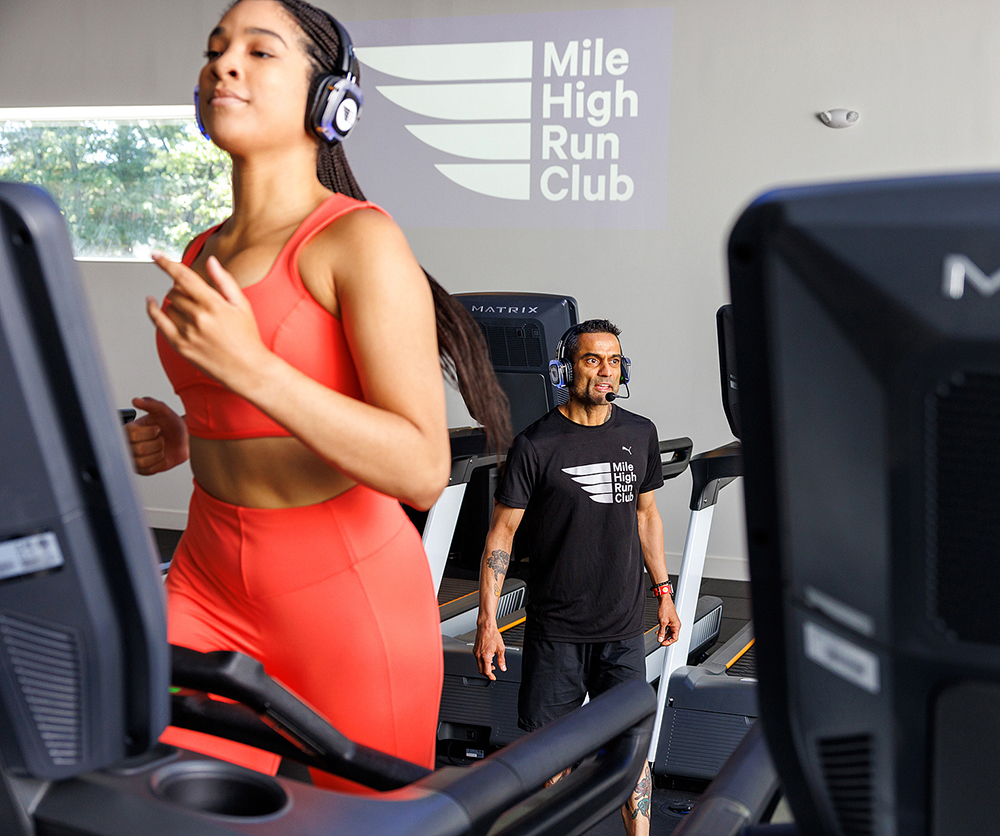
Physique 57 offers a high-intensity, low-impact workout programme that uses body weight as resistance.
It’s been designed to be ‘safe, fun and effective’, with interval overload as the basis for programming.
Workouts are designed to sculpt the body by combining interval training (sprint, recovery) and strength training (targeted muscle exertion) through exercise sequences.
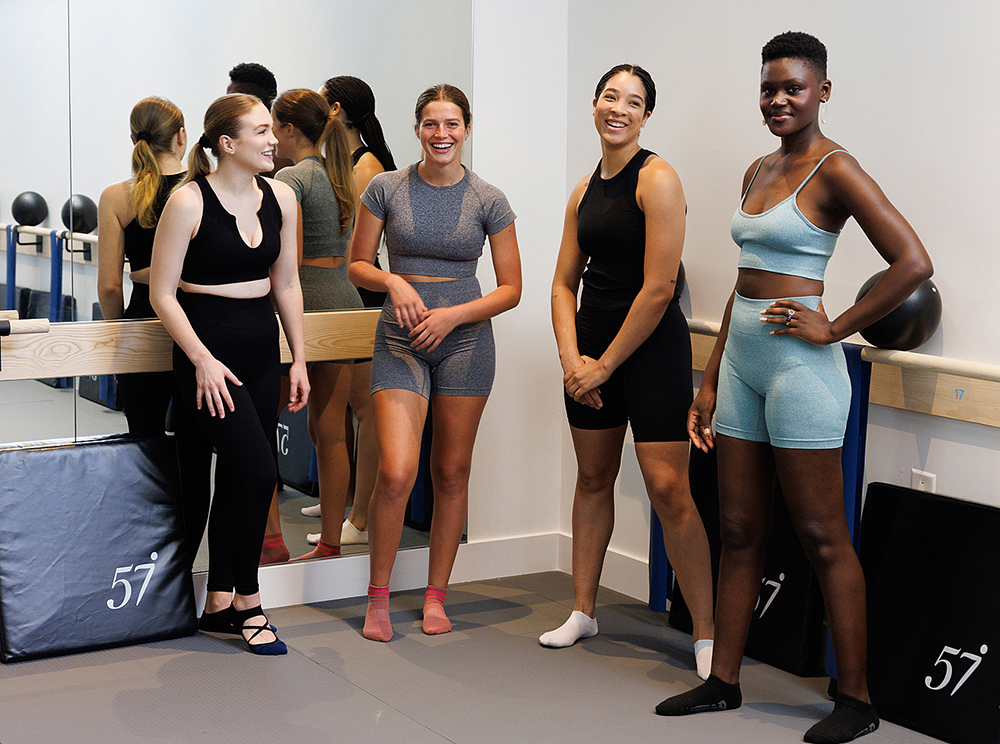
Classes are not based on any one yoga style but reflect the inspirations and backgrounds of teachers. All offerings include the fundamental principles of breath – pranayama, movement – asana and awareness– meditation.
Humming Puppy teachers are a warm and welcoming collective who are passionate about sparking curiosity, conversation and connection through the practice of yoga.
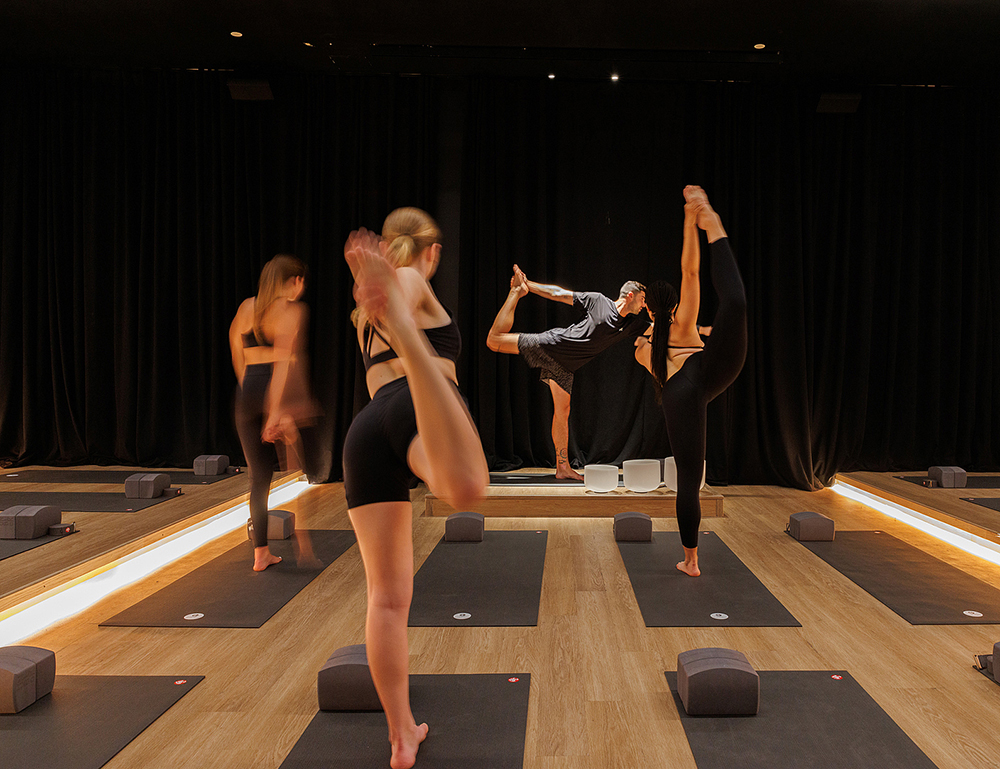
One-on-one personal training session within a motivational group fitness setting is Fhitting Room’s approach. Classes incorporate high-intensity intervals and functional strength movements that translate directly to daily life activities, with an emphasis on kettlebell training.
Kettlebells are central to the programming because they offer huge potential to progress.
